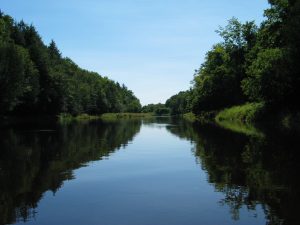Study highlights importance of everyday interactions in environmental research
 Scientific research can often feel prescriptive, sterile and disconnected from the communities where it happens — but it doesn’t have to be. Using two case studies of watershed restoration and environmental monitoring projects in Maine, a new paper illustrates how scientists can successfully use “embodiment,” or the nuanced practices and everyday interactions that shape collaboration, to improve their research.
Scientific research can often feel prescriptive, sterile and disconnected from the communities where it happens — but it doesn’t have to be. Using two case studies of watershed restoration and environmental monitoring projects in Maine, a new paper illustrates how scientists can successfully use “embodiment,” or the nuanced practices and everyday interactions that shape collaboration, to improve their research.
The authors of the study, assert that “embodiment” encompasses the many ways in which people interact while collaborating, from listening, sharing and organizing ideas to fostering empathy, deciding what questions to ask, working through tensions and laughing together.
To show how embodiment can be used in practice to improve research methods, authors Jennifer Smith Mayo, Ph.D. student in communication, Michael Clay, Ph.D. candidate in communication and journalism, and Bridie McGreavy, associate professor of environmental communication and Mitchell Center faculty fellow, highlighted two case studies: the Meduxnekeag River watershed restoration and Maine-eDNA project.
In the Meduxnekeag River watershed case study, the researchers worked with partners to design an interview protocol that asks farmers how the act of farming helps them shape their relationships with land and water in the watershed, the values that guide those practices and how they think about best management practices. The results showed how important caring for soil is to the ways that farmers relate to, make decisions about and find value in land and water throughout the Meduxnekeag watershed.
“What makes the Meduxnekeag River watershed case study so interesting is how it helped us consider how to connect research design in community-engaged research with everyday, lived experiences of our community partners,” says Clay. “You can see this play out in how our questions shifted from persuading farmers, or determining what communication approaches they will find compelling, to better understanding farmers’ relationships and perspectives as they relate to soil, water and farming practices.”
The Meduxnekeag River research was supported by the Mitchell Center’s Water Resources Research Institute (WRRI) Grant Program.
